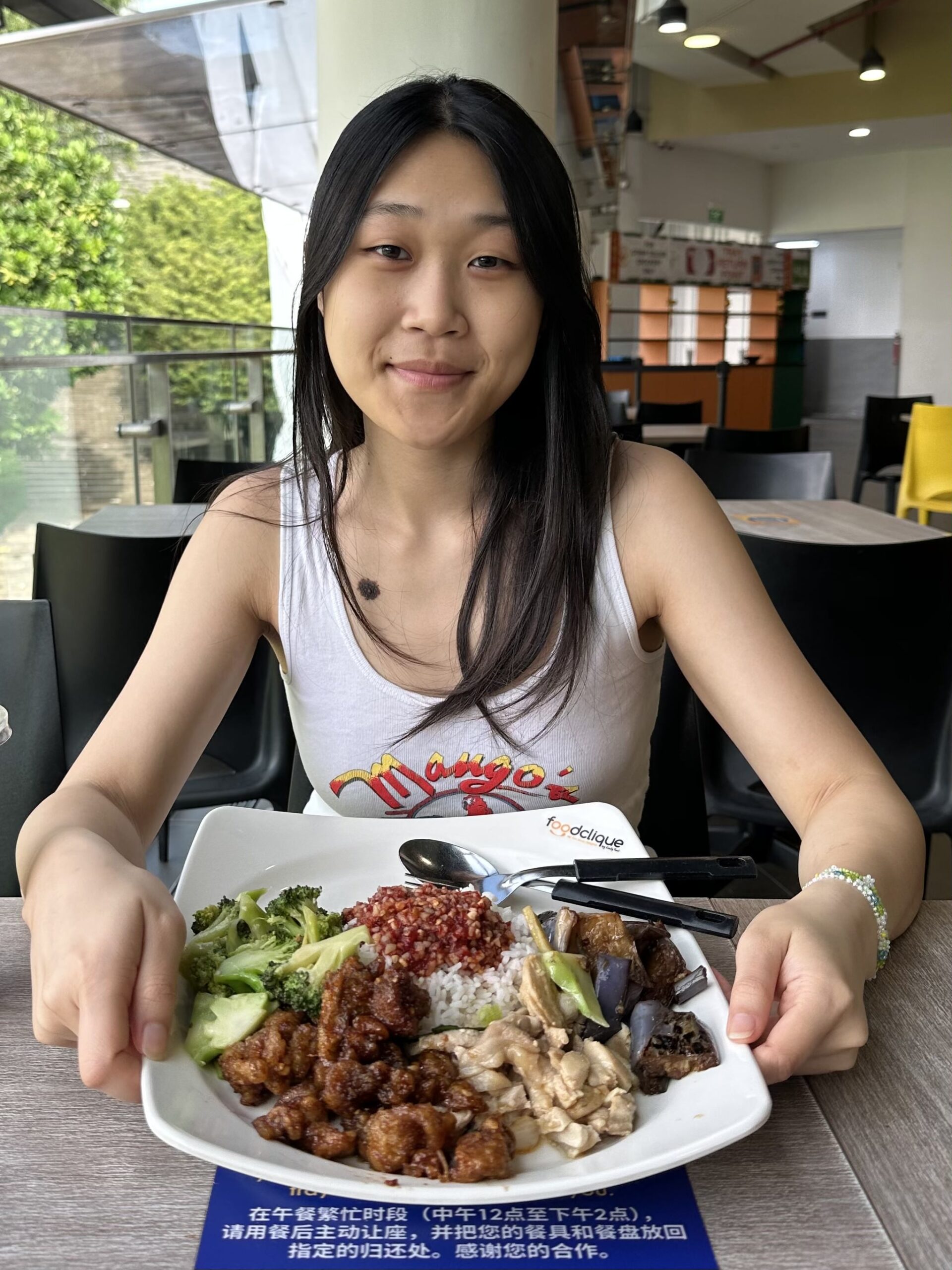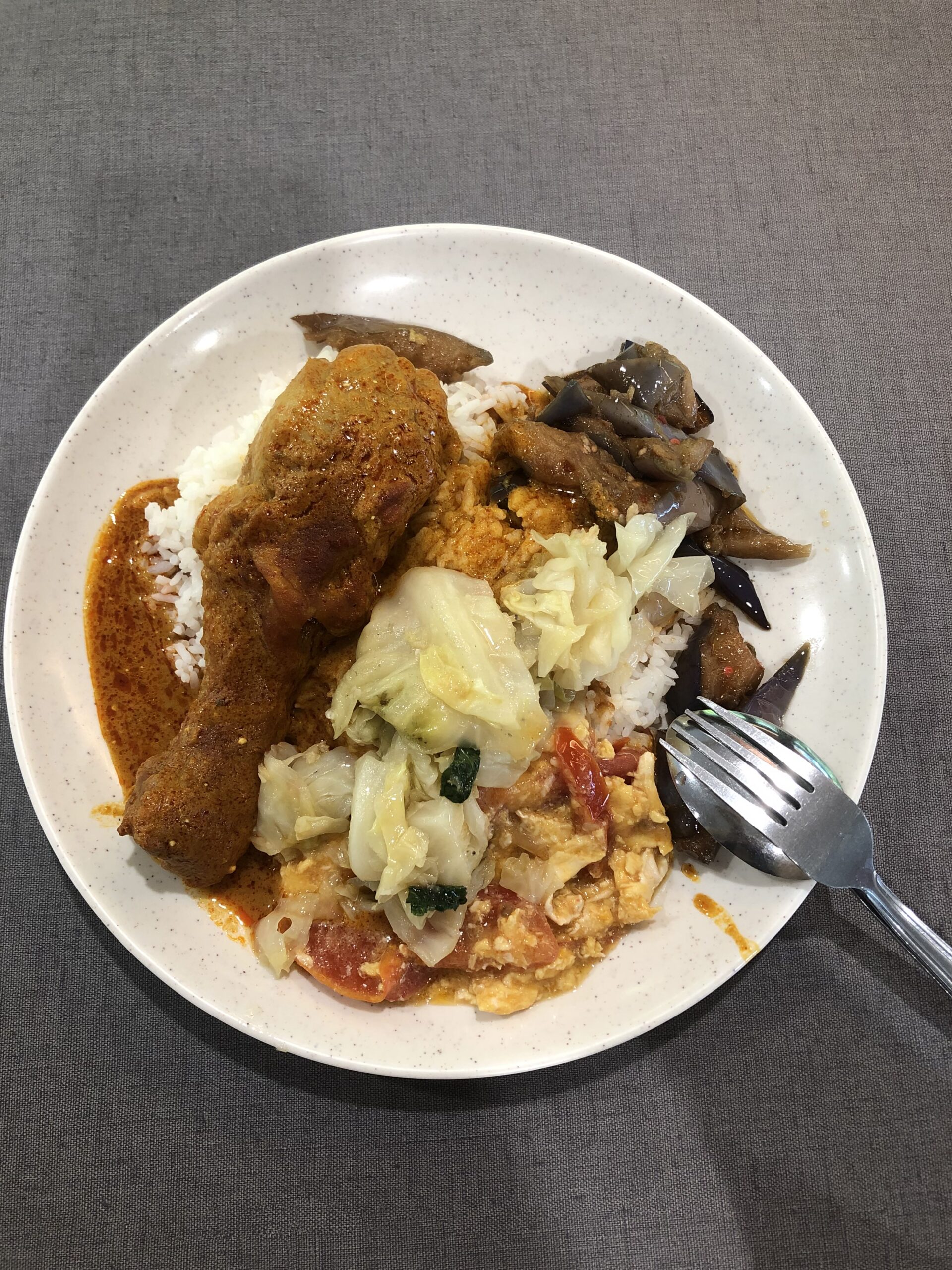
Flavors and Words: Learning Culture Through Cai Fan
By: Emily Duan (SEAS + CAS ’27)
GRIP: Engineering Research in Singapore
When I arrived in Singapore for my research internship at the National University of Singapore, I knew for sure I wanted to explore the local cuisine, a tantalizing combination of Chinese cuisine, Malaysian cuisine, Indian cuisine, and so much more. However, I didn’t expect the everyday act of ordering cai fan (economy rice or mixed rice in English) to become one of my most impactful cultural learning experiences.
Cai fan can be found in just about any canteen on campus or hawker center in Singapore, and is the kind of meal that embodies customization: the worker prepares a plate with a large scoop of rice, typically just plain white rice but some stalls offer fried rice or red/purple/brown rice, then motions for you to select a number of dishes from rows of stir-fried vegetables, meats, tofu, and stews in metal trays behind a glass display. But for someone who doesn’t often use Mandarin outside of home, this freedom was initially intimidating.

At first, I stuck with only the dishes I could confidently identify and name in Mandarin, things like 番茄鸡蛋 (fānqié jīdàn, stir-fried egg with tomato), 白菜 (báicài, cabbage), or 茄子 (qiézi, eggplant). I didn’t want to risk disrupting the well-oiled machine of the lunchtime cai fan queue, where people shuffled forward with quiet efficiency, pointed without hesitation, and had their plate or takeaway boxes loaded with food and paid for in under 30 seconds. I felt pressure to keep pace, and fumbling over a vegetable name or asking what a mystery meat in a velvety brown sauce was for the third time in a row felt like a major social faux pas.
So I played it safe by pointing at familiar dishes, avoiding mystery meats, and staying silent unless absolutely necessary. But of course, playing it safe doesn’t last forever, not when the food is this tempting and language learning in a whole new county is unavoidable.
Then one day, I pointed to what I thought was a familiar braised meat dish, only to realize seconds too late that I had no idea what I’d just asked for. The auntie had already ladled a massive, glistening chunk of something onto my rice, using a clean pair of scissors to cut it up into bite-size pieces. It wasn’t until I got ready to pay that I realized it was a humongous braised pork trotter. Rich, tender, and undeniably delicious, but also costed an extra five dollars on its own. (For context: my entire meal would’ve been $4.50 without it.)
On another occasion, I confidently asked for 豆角 (dòujiǎo, string beans) when what I was referring to was 豆芽 (dòuyá, bean sprouts). I received a generous scoop of string beans I hadn’t initially wanted, and I didn’t feel like paying extra for another vegetable dish. That meal was a quiet lesson in humility and vocabulary.
But with these small mistakes came small victories. I began to learn the colloquial names of my favorite dishes through repetition, like 家常豆腐 (jiāchǎng dòufu, homestyle tofu) or 咖喱鸡腿(gālí jītuǐ, chicken curry drumstick). I learned to watch what the people ahead of me were ordering to learn what was good at this particular stall, and to scan the trays for dishes that were nearly empty, because chances are, the auntie might just give you everything left in the tray. I learned to never go during peak lunch rush hour, unless I wanted to stand in line for 20 minutes.
I also learned that pointing and using “这个” (zhège, this one) and “那个” (nàge, that one), which I initially considered beginner-level Mandarin-speaking behavior, is totally normal. It’s what everyone does, locals included. Ordering cai fan is not about perfect grammar or polished tones, but instead, it’s about curiosity, open-mindedness, and, sometimes, delicious mistakes.
The process of ordering lunch has made me more confident in speaking Mandarin and more connected to the everyday rhythms of Singaporean life outside of going into my research lab. It reminded me that culture is something you immerse yourself in through day-to-day experiences and activities, not something learned by observing from the outside. And sometimes, it costs five extra dollars, but it’s worth every bite.